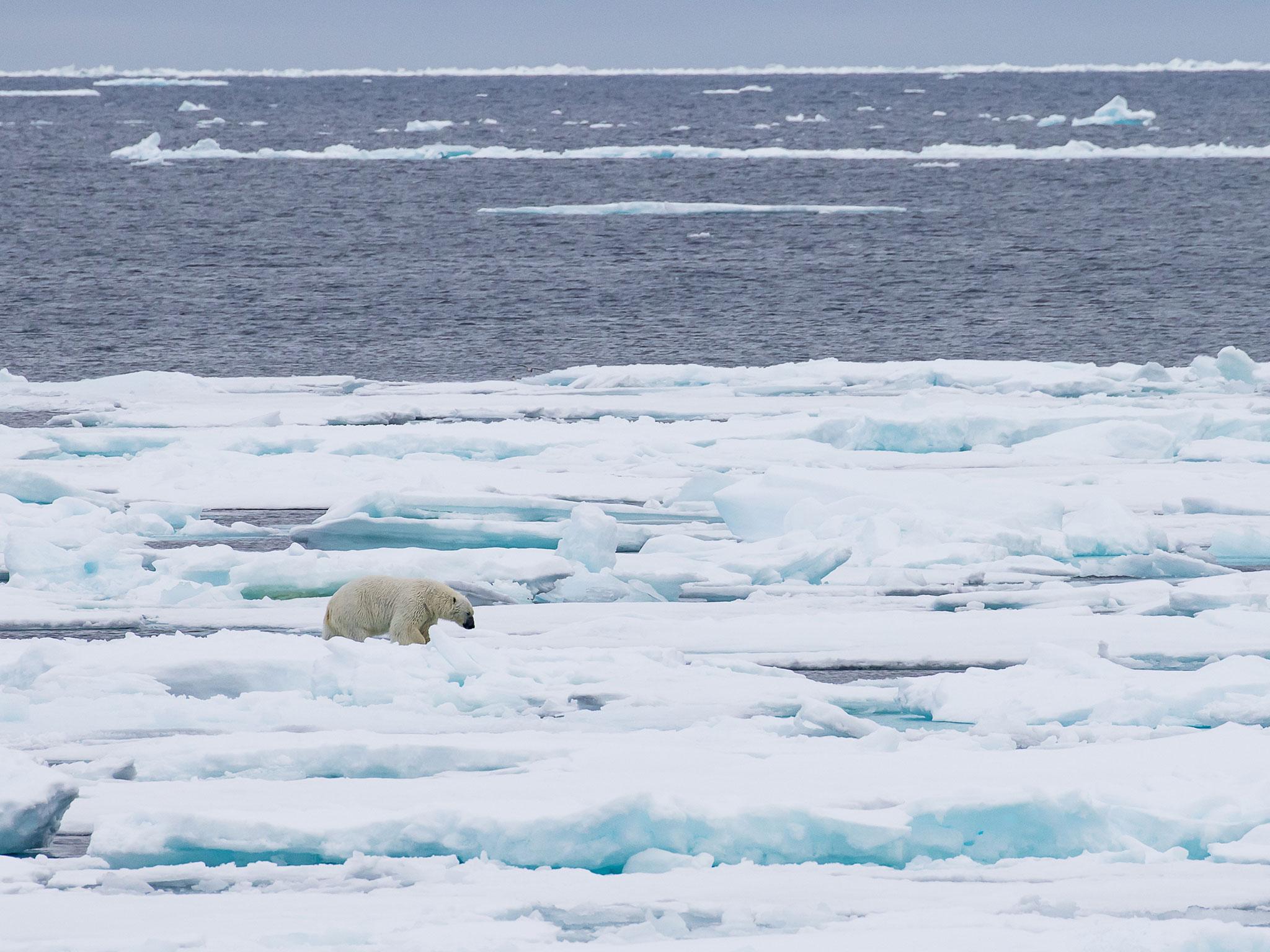Global sea ice hits record low for January as the annual polar melting period expanded
The amount of ice in the world last month was the lowest ever recorded in any January

The world’s sea ice shrank to a record January low last month as the annual polar melting period expanded, experts say.
The 5.04 million square miles of ice in the Arctic was 525,000 square miles below the 1981-to-2010 ice cover average, making it the lowest January total in satellite records, according to the US National Snow and Ice Data Center (NSIDC).
Combined with low levels in the Antarctic, global sea ice amounted to a record low for any first month of the year, the organisation concluded.
The news comes just days after researchers from the University of Colorado Boulder said the rate at which sea levels are rising was increasing every year, driven mostly by accelerated melting in Greenland and Antarctica.
The NSIDC, a respected authority on the Earth’s frozen regions, which researches and analyses snow, glaciers and ice sheets among other features, said that ice in the Arctic Ocean hit “a new record low” at both the start and end of last month.
In an online post, the group said: “January of 2018 began and ended with satellite-era record lows in Arctic sea ice extent, resulting in a new record low for the month. Combined with low ice extent in the Antarctic, global sea ice extent is also at a record low.”
It said the Arctic experienced a week of record low daily ice totals at the start of the month, with the January average beating 2017 for a new record low.
“Ice grew through the month at near-average rates, and in the middle of the month daily extents were higher than for 2017,” the report went on. “However, by the end of January, extent was again tracking below 2017.”
Scientists place more importance on monthly average figures, which smooth out temporary weather effects.
However, the organisation’s chief, Mark Serreze, said he was more worried than ever because ice shrinkage was now starting to happen all year round – in winter as well as in September, the warmest month – which is a recent phenomenon.
Ingrid Onarheim, of the University of Bergen and Bjerknes Centre for Climate Research, said: “We are losing sea ice in all seasons now.”
And climate scientist Zack Labe of Cornell University said the data for 2018 so far suggested the decline was consistent with the long-term trend.
The rate of decline for January was 18,400 square miles a year, or 3.3 per cent a decade, NSIDC figures showed.
“The pattern seen in previous months continued, with below-average extent in the Barents and Kara Seas, as well as within the Bering Sea,” the report added.
The experts said this year’s data suggested the situation in the Antarctic was also worrying. “In the southern hemisphere, after January 11 sea ice began tracking low, leading to a January average extent that was the second-lowest on record. The lowest extent for this time of year was in 2017,” the NSIDC report said.
At the end of last year the US National Oceanic and Atmospheric Administration agency reported that the Arctic had “reached a new normal” of air temperatures warming at double the rate of global air temperature rises, with the region showing “no signs of returning to reliably frozen region of recent past decades”.
It said there were “pronounced decade-long declines in cover and extent of sea ice and winter snow cover”, and that ”Arctic paleo-reconstructions which extend back millions of years indicate the magnitude and pace of 21st-century sea ice decline and surface ocean warming is unprecedented in at least the last 1,500 years and likely much longer”.
Sea ice cover continued to be relatively young and thin, while older, thicker ice comprised only 21 per cent of the ice cover in 2017 against 45 per cent in 1985.
Scientists say melting sea ice matters because it feeds back into a vicious circle of climate change and rising temperatures. It also damages ecosystems and wildlife from walruses to polar bears, and threatens to drive mass migration away from low-lying countries.
Ms Onarheim said: “If we want to keep the ice cover, we have to reduce the carbon dioxide emissions. The faster we emit the CO2, the faster we will lose the sea ice.”
Join our commenting forum
Join thought-provoking conversations, follow other Independent readers and see their replies
Comments
Bookmark popover
Removed from bookmarks